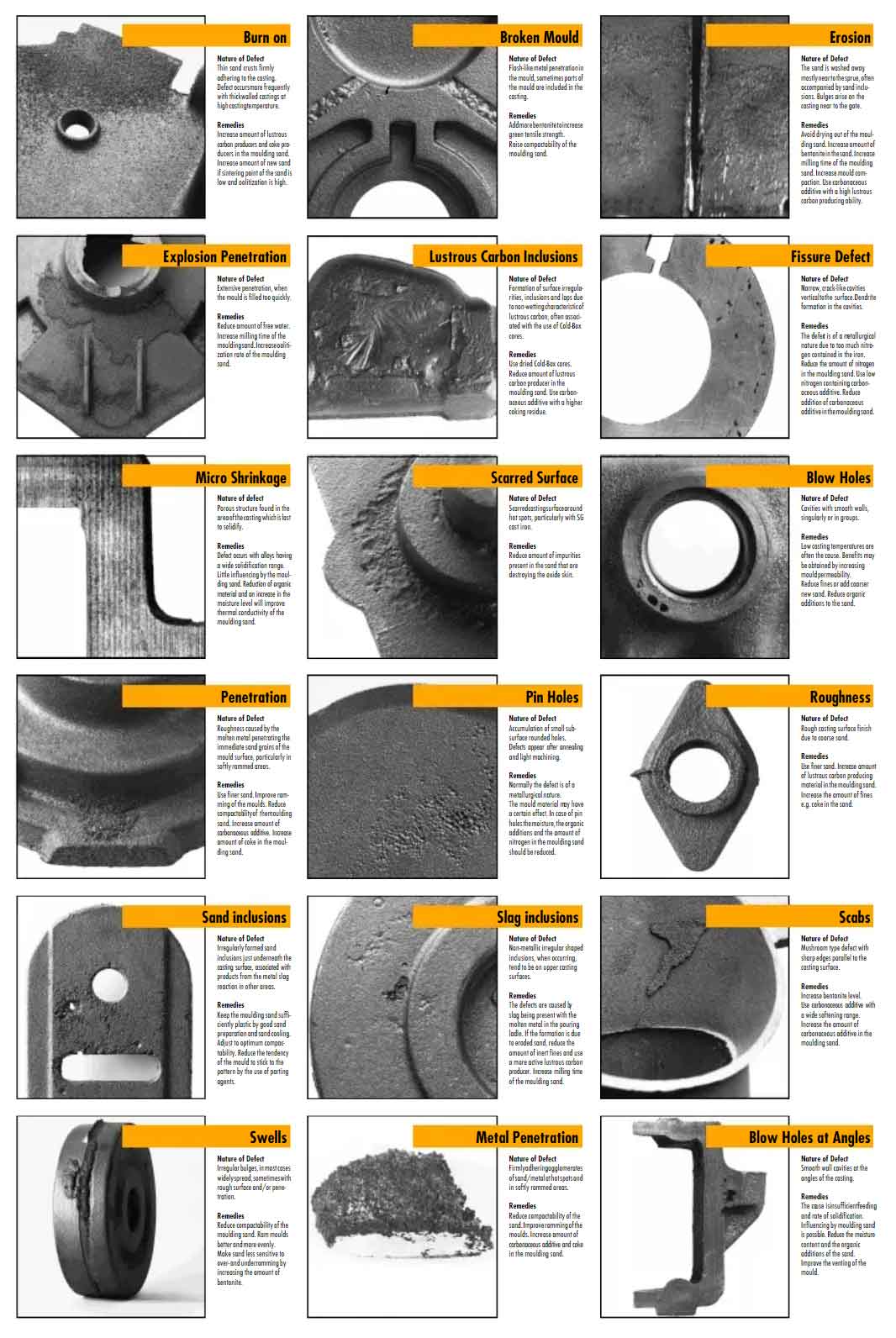Quality control in casting is essential to ensure that cast components meet the required specifications and standards. Detecting and correcting defects in the casting process involves implementing effective measures at various stages. Here are some key steps and techniques for quality control in casting:

- Design and Process Optimization:
- Use computer-aided design (CAD) and simulation software to optimize casting designs and process parameters.
- Conduct a thorough analysis of the casting design to minimize potential defects, such as shrinkage, porosity, or uneven cooling.
- Raw Material Inspection:
- Perform incoming material inspection to ensure the quality of the raw materials, including the metal alloy, sand, binders, and additives.
- Verify the chemical composition, mechanical properties, and purity of the metal alloys to meet the desired specifications.
- Mould and Core Quality:
- Inspect the moulds and cores for dimensional accuracy, surface finish, and absence of defects.
- Use non-destructive testing techniques like ultrasonic testing or X-ray examination to identify any internal defects in the mould or core.
- Process Control:
- Monitor and control process variables, such as pouring temperature, solidification time, and cooling rate, to ensure consistent casting quality.
- Implement process controls like melt treatment, gating system design, and mold preheating to minimize defects like shrinkage, gas porosity, or hot tears.
- Non-Destructive Testing (NDT):
- Utilize NDT techniques like visual inspection, dye penetrant testing, magnetic particle inspection, radiographic testing, or ultrasound testing to identify surface or internal defects in castings.
- Conduct regular NDT inspections during and after the casting process to ensure defect-free components.
- Dimensional Inspection:
- Measure critical dimensions of castings using precision instruments like coordinate measuring machines (CMM) or laser scanning.
- Compare measured dimensions with the specified tolerances to detect any deviations or inaccuracies.
- Post-Casting Treatment:
- Perform heat treatment processes like annealing, quenching, or tempering to improve the mechanical properties and remove residual stresses in the castings.
- Conduct surface treatments like shot blasting or grinding to remove any surface defects or irregularities.
- Documentation and Traceability:
- Maintain comprehensive records of the casting process, including inspection reports, NDT results, process parameters, and material certifications.
- Implement traceability systems to track each casting’s origin, materials used, and processing history for effective quality control and post-production analysis.
- Continuous Improvement:
- Analyze the collected data, including defect rates, customer feedback, and inspection results, to identify trends, patterns, and areas for improvement.
- Implement corrective actions, process modifications, or employee training programs based on the identified issues to enhance casting quality and reduce defects.
By implementing these measures and continually monitoring the casting process, manufacturers can detect and correct defects effectively, ensuring the production of high-quality cast components.
